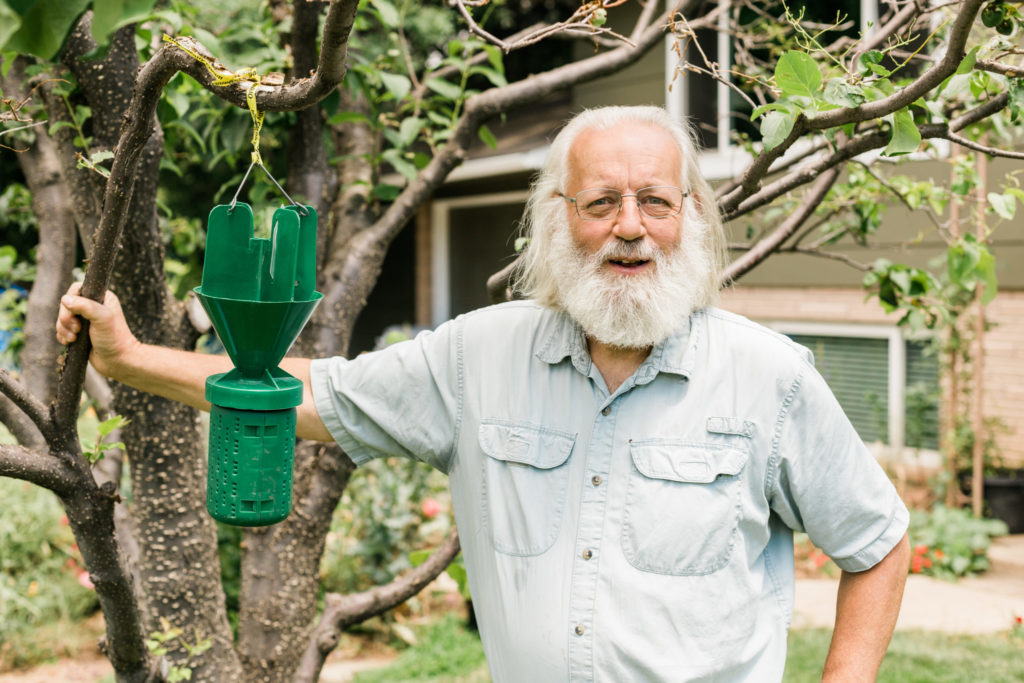
After nearly four decades on the faculty at CSU’s College of Agricultural Sciences, Whitney Cranshaw is officially transitioning into retirement. The Department of Agricultural Biology professor and Extension specialist leaves behind a rich legacy of research and public outreach around the world of insects.
A love of the natural world and a passion for insects
Raised just outside of Boston, Cranshaw developed a passion for insects as a child, often visiting a nearby field to observe and collect specimens.
“I was collecting insects as a kid as long as I can remember,” said Cranshaw. “There was a little field nearby that I spent a lot of time in—it was a universe. However, I went back a few years ago and it was only half of an acre.”
Cranshaw jokingly remembers that studying insects was his third passion behind dinosaurs and reptiles. But, entomology won out as Cranshaw eventually found himself in graduate school at University of Minnesota, where he studied entomology and landed his first job as an extension specialist. In 1983 he noticed a job opening at Colorado State University and jumped on it. Nearly four decades later, the impact he’s had on the field of entomology is immense.
Increasing the entomological literacy of the people of Colorado has been the defining goal of Cranshaw’s career. With a focus on the natural history of insects and the biology of novel insects in the Intermountain West, Cranshaw’s research is closely tied to outreach activities. Through his work, he’s changed the roadmap for entomology in this region.
In addition to nearly 100 peer-reviewed publications, Cranshaw has written hundreds of extension bulletins and authored five highly-regarded books which have received praise from the likes of the Washington Post, The Boston Globe, and the San Francisco Chronicle, most notably “Garden Insects of North America: The Ultimate Guide to Backyard Bugs,” which has become the standard reference for identification of insects across the country. A second edition, released in 2017, was a major revision and includes over 3000 images. Published through the non-profit Princeton University Press, it has always been affordable – weighing in at close to 6 lbs, it is cheaper than the price of hamburger.
In addition to publications, Cranshaw has also offered important services to entomologists internationally through his work in providing over 6,000 images to Bugwood, a widely used reference site, and the creation of two long-lasting LISTSERVs. He has also been an engaging educator, turning hundreds of students on to entomology every semester.
Some of Cranshaw’s top career highlights have been helping discover and co-describe the Thousand Cankers Disease that impacts black walnut trees, championing butterfly gardening in North America, writing his “Garden Insects of North America” book, and anything related to promoting the understanding of insects and providing new ways to think about them. Most recently, Cranshaw received an award from GardenComm—formerly the Garden Writers Association—that recognized his books, Extension publications, and insect photos.
“I just like it all,” said Cranshaw. “Colorado is such a diverse state so things vary in different parts of the state. What’s happening in the Front Range isn’t necessarily happening on the Western Slope. For a state this size, we have as many ecological zones as anywhere else in the country.”
Working beyond ‘retirement’ and continuing his relationship with CSU
Officially a professor emeritus, Cranshaw isn’t quite finished working within the Colorado State University system. His work studying hemp insects will continue, which was a project developed late in his career. That work can be found on his hemp insect website.
“It’s been a real joy and it’s gotten a lot of attention,” said Cranshaw.
Cranshaw will also continue teaching for at least another semester. Five years ago, he developed an online class in horticultural entomology. With the emergence of COVID-19 and its impact on new hires, Cranshaw will continue to teach the course, which will see up to 100 students during the Fall 2020 semester. He’ll also continue to be the point person for public and media inquiries about all-things entomology.
“I’m still answering phone calls and taking questions,” said Cranshaw. “I just don’t think I could sleep well at night, knowing that other people were having to answer those, and they are stretched thin already.”
Beyond that work, Cranshaw is looking forward to turning his attention—with the help of some new free time—toward writing. His top priority is developing a writing project around household insects in the Rocky Mountain area.
“Dealing with home insects always ended up being half of the questions I would get [from the public],” said Cranshaw. “They really haven’t been studied, so putting together a publication on that is near the top.”